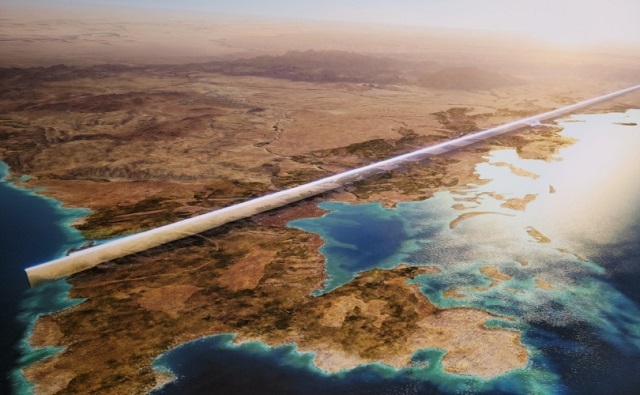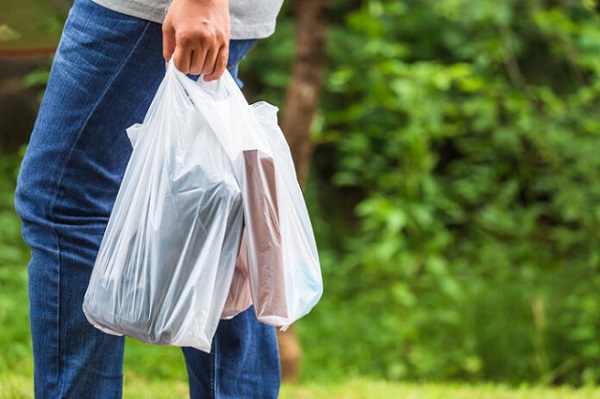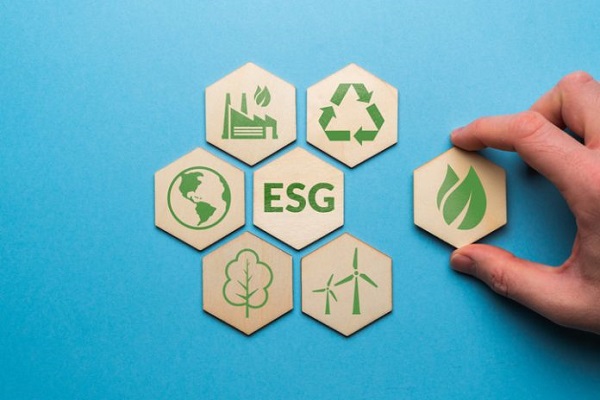Business
Saudis evict locals with lethal force to build ‘green’ city in line with globalist goals: report

From LifeSiteNews
One villager who refused to relinquish his property reportedly was killed and 47 who wouldn’t leave have been arrested during the building of ‘The Line.’
Saudi Arabian officials have reportedly allowed the use of lethal force against local villagers to clear land to construct the “green” city named ‘The Line’ that is being built in conformity with globalist agenda-linked 2030 green plans with help from Western-based construction firms.
As per a recent BBC report, former Saudi Arabia intelligence officer Col Rabih Alenezi, who is now in exile in the United Kingdom for fear of his security, noted he was given orders to evict villagers from a local tribe to clear land for the ‘The Line’ project.
Reportedly, one person was shot and killed after refusing to leave the area. Abdul Rahim al-Huwaiti refused to let a land registry committee value his property and was shot by Saudi authorities one day later, when the clearance mission to evict the villagers was taking place. It was reported that he had posted videos on social media protesting the evictions.
As noted by the BBC, the Saudi state security at the time claimed that al-Huwaiti fired on security and that he was then shot in retaliation. However, human rights groups have said he was killed for refusing to leave the area and comply with eviction orders.
While the BBC noted that it was not able to “independently verify Col Alenezi’s comments about lethal force,” it said a “source” who was familiar with the inner workings of Saudi intelligence told them that Alenezi’s testimony about the clearance mission, as well as the details about it, were accurate in terms of that such clearance missions entail.
Another 47 villagers have been arrested for not going along with evictions, many of them being leveled terrorism-related charges.
Alenezi noted that he does not regret his decision to ignore his clearance orders for the project, saying, “Mohamed Bin Salman will let nothing stand in the way of the building of Neom.”
“I started to become more worried about what I might be asked to do to my own people,” he noted.
‘The Line’ is the flagship “green” project of what is known as Neom, a $1.5 trillion development on the area’s Red Sea. It is being built as part of Saudia Arabia’s 2030 strategy, which looks to move the kingdom’s economy away from oil and its vast reserves.
‘The Line’ is in lockstep with United Nations’ 2030 Agenda for Sustainable Development, which includes phasing out coal-fired power plants, reducing fertilizer usage, and curbing natural gas use over the coming decades.
The reduction and eventual elimination of the use of so-called “fossil fuels” and a transition to unreliable “green” energy has been pushed by the World Economic Forum (WEF), the globalist group behind the socialist “Great Reset” agenda that also promotes population control.
“The Line’ itself is a 170-kilometer-long “car-free” city that is in the northwest of the Gulf country, according to renderings. It will “run into the Red Sea,” where an extension of its structure will serve as a port for ships.
The Neom project is being built by dozens of global construction companies, many of them Western based. According to an analysis conducted by the BBC, satellite images show that three villages’ schools, and hospitals have been demolished to make way for the project.
Future of ‘Dystopian’ project in doubt
‘The Line’ project is being built based on the Saudi Arabian legal system, which is mostly based on Muslim sharia law that criminalizes anyone who “challenges, either directly or indirectly, the religion or justice of the King or Crown Prince. According to Amnesty International, two of 81 men executed by the Saudi Arabian government in 2022 were “convicted of crimes related to their participation in violent anti-government protests.”
When plans for ‘The Line’ were revealed, its promo video noted, “For too long, humanity has existed within dysfunctional and polluted cities that ignore nature. Now, a revolution in civilization is taking place.”
However, the future of the 170-kilometer-long project remains in doubt.
As per a recent Bloomberg report, it appears that only a 2.4-kilometer portion will be completed by 2030, according to a source familiar with the project.
Plans to have 1.5 million residents living in ‘The Line’ will not pan out as planned, sources said, and it is expected there will be less than 300,000 when the project finally comes online.
Some commentators slammed the project as “dystopian,” with one describing it as a “blatant greenwashing PR exercise by the heads of this rotten regime,” pointing out that “it’s an attempted distracting cop-out” since “Saudi Arabia is still at the very bottom for human rights (just pick next to women, any minority).”
Tech blog Engadget has raised concerns that The Line “is expected to be loaded with countless sensors, cameras, and facial recognition technology that in such a confined space could push government surveillance to almost unthinkable levels.”
Business
Ottawa should end war on plastics for sake of the environment

From the Fraser Institute
Here’s the shocker: Meng shows that for 15 out of the 16 uses, plastic products incur fewer GHG emissions than their alternatives…
For example, when you swap plastic grocery bags for paper, you get 80 per cent higher GHG emissions. Substituting plastic furniture for wood—50 per cent higher GHG emissions. Substitute plastic-based carpeting with wool—80 per cent higher GHG emissions.
It’s been known for years that efforts to ban plastic products—and encourage people to use alternatives such as paper, metal or glass—can backfire. By banning plastic waste and plastic products, governments lead consumers to switch to substitutes, but those substitutes, mainly bulkier and heavier paper-based products, mean more waste to manage.
Now a new study by Fanran Meng of the University of Sheffield drives the point home—plastic substitutes are not inherently better for the environment. Meng uses comprehensive life-cycle analysis to understand how plastic substitutes increase or decrease greenhouse gas (GHG) emissions by assessing the GHG emissions of 16 uses of plastics in five major plastic-using sectors: packaging, building and construction, automotive, textiles and consumer durables. These plastics, according to Meng, account for about 90 per cent of global plastic volume.
Here’s the shocker: Meng shows that for 15 out of the 16 uses, plastic products incur fewer GHG emissions than their alternatives. Read that again. When considering 90 per cent of global plastic use, alternatives to plastic lead to greater GHG emissions than the plastic products they displace. For example, when you swap plastic grocery bags for paper, you get 80 per cent higher GHG emissions. Substituting plastic furniture for wood—50 per cent higher GHG emissions. Substitute plastic-based carpeting with wool—80 per cent higher GHG emissions.
A few substitutions were GHG neutral, such as swapping plastic drinking cups and milk containers with paper alternatives. But overall, in the 13 uses where a plastic product has lower emissions than its non-plastic alternatives, the GHG emission impact is between 10 per cent and 90 per cent lower than the next-best alternatives.
Meng concludes that “Across most applications, simply switching from plastics to currently available non-plastic alternatives is not a viable solution for reducing GHG emissions. Therefore, care should be taken when formulating policies or interventions to reduce plastic demand that they result in the removal of the plastics from use rather than a switch to an alternative material” adding that “applying material substitution strategies to plastics never really makes sense.” Instead, Meng suggests that policies encouraging re-use of plastic products would more effectively reduce GHG emissions associated with plastics, which, globally, are responsible for 4.5 per cent of global emissions.
The Meng study should drive the last nail into the coffin of the war on plastics. This study shows that encouraging substitutes for plastic—a key element of the Trudeau government’s climate plan—will lead to higher GHG emissions than sticking with plastics, making it more difficult to achieve the government’s goal of making Canada a “net-zero” emitter of GHG by 2050.
Clearly, the Trudeau government should end its misguided campaign against plastic products, “single use” or otherwise. According to the evidence, plastic bans and substitution policies not only deprive Canadians of products they value (and in many cases, products that protect human health), they are bad for the environment and bad for the climate. The government should encourage Canadians to reuse their plastic products rather than replace them.
Author:
Business
ESG Puppeteers

From Heartland Daily News
By Paul Mueller
The Environmental, Social, and Governance (ESG) framework allows a small group of corporate executives, financiers, government officials, and other elites, the ESG “puppeteers,” to force everyone to serve their interests. The policies they want to impose on society — renewable energy mandates, DEI programs, restricting emissions, or costly regulatory and compliance disclosures — increase everyone’s cost of living. But the puppeteers do not worry about that since they stand to gain financially from the “climate transition.”
Consider Mark Carney. After a successful career on Wall Street, he was a governor at two different central banks. Now he serves as the UN Special Envoy on Climate Action and Finance for the United Nations, which means it is his job to persuade, cajole, or bully large financial institutions to sign onto the net-zero agenda.
But Carney also has a position at one of the biggest investment firms pushing the energy transition agenda: Brookfield Asset Management. He has little reason to be concerned about the unintended consequences of his climate agenda, such as higher energy and food prices. Nor will he feel the burden his agenda imposes on hundreds of millions of people around the world.
And he is certainly not the only one. Al Gore, John Kerry, Klaus Schwab, Larry Fink, and thousands of other leaders on ESG and climate activism will weather higher prices just fine. There would be little to object to if these folks merely invested their own resources, and the resources of voluntary investors, in their climate agenda projects. But instead, they use other people’s resources, usually without their knowledge or consent, to advance their personal goals.
Even worse, they regularly use government coercion to push their agenda, which — incidentally? — redounds to their economic benefit. Brookfield Asset Management, where Mark Carney runs his own $5 billion climate fund, invests in renewable energy and climate transition projects, the demand for which is largely driven by government mandates.
For example, the National Conference of State Legislatures has long advocated “Renewable Portfolio Standards” that require state utilities to generate a certain percentage of electricity from renewable sources. The Clean Energy States Alliance tracks which states have committed to moving to 100 percent renewable energy, currently 23 states, the District of Columbia, and Puerto Rico. And then there are thousands of “State Incentives for Renewables and Efficiency.”
Behemoth hedge fund and asset manager BlackRock announced that it is acquiring a large infrastructure company, as a chance to participate in climate transition and benefit its clients financially. BlackRock leadership expects government-fueled demand for their projects, and billions of taxpayer dollars to fund the infrastructure necessary for the “climate transition.”
CEO Larry Fink has admitted, “We believe the expansion of both physical and digital infrastructure will continue to accelerate, as governments prioritize self-sufficiency and security through increased domestic industrial capacity, energy independence, and onshoring or near-shoring of critical sectors. Policymakers are only just beginning to implement once-in-a-generation financial incentives for new infrastructure technologies and projects.” [Emphasis added.]
Carney, Fink, and other climate financiers are not capitalists. They are corporatists who think the government should direct private industry. They want to work with government officials to benefit themselves and hamstring their competition. Capitalists engage in private voluntary association and exchange. They compete with other capitalists in the marketplace for consumer dollars. Success or failure falls squarely on their shoulders and the shoulders of their investors. They are subject to the desires of consumers and are rewarded for making their customers’ lives better.
Corporatists, on the other hand, are like puppeteers. Their donations influence government officials, and, in return, their funding comes out of coerced tax dollars, not voluntary exchange. Their success arises not from improving customers’ lives, but from manipulating the system. They put on a show of creating value rather than really creating value for people. In corporatism, the “public” goals of corporations matter more than the wellbeing of citizens.
But the corporatist ESG advocates are facing serious backlash too. The Texas Permanent School Fund withdrew $8.5 billion from Blackrock last week. They join almost a dozen state pensions that have withdrawn money from Blackrock management over the past few years. And last week Alabama passed legislation defunding public DEI programs. They follow in the footsteps of Florida, Texas, North Carolina, Utah, Tennessee, and others.
State attorneys general have been applying significant pressure on companies that signed on to the “net zero” pledges championed by Carney, Fink, and other ESG advocates. JPMorgan and State Street both withdrew from Climate Action 100+ in February. Major insurance companies started withdrawing from the Net-Zero Insurance Alliance in 2023.
Still, most Americans either don’t know much about ESG and its potential negative consequences on their lives or, worse, actually favour letting ESG distort the market. This must change. It’s time the ESG puppeteers found out that the “puppets” have ideas, goals, and plans of their own. Investors, taxpayers, and voters should not be manipulated and used to climate activists’ ends.
They must keep pulling back on the strings or, better yet, cut them altogether.
Paul Mueller is a Senior Research Fellow at the American Institute for Economic Research. He received his PhD in economics from George Mason University. Previously, Dr. Mueller taught at The King’s College in New York City.
Originally posted at the American Institute for Economic Research, reposted with permission.
-

 COVID-192 days ago
COVID-192 days agoJapan’s most senior cancer doctor: COVID shots are ‘essentially murder’
-

 Brownstone Institute1 day ago
Brownstone Institute1 day agoThe WHO’s Proposed Pandemic Agreements Worsen Public Health
-

 John Stossel2 days ago
John Stossel2 days agoProtecting Free Speech: The Early Warning Signs From Around The World
-

 COVID-192 days ago
COVID-192 days agoTrudeau’s public health agency recommends another experimental COVID booster
-

 Health2 days ago
Health2 days agoTHE WPATH TAPES: Behind-The-Scenes Recordings Reveal What Top Gender Doctors Really Think About Sex Change Procedures
-

 armed forces1 day ago
armed forces1 day agoTrudeau government has spent $10 million promoting DEI in the military as recruitment flounders
-

 COVID-191 day ago
COVID-191 day agoThe New York Times Admits Injuries from COVID-19 Shots
-

 National1 day ago
National1 day agoTrudeau again blames ‘climate change’ for mostly man-made wildfires



